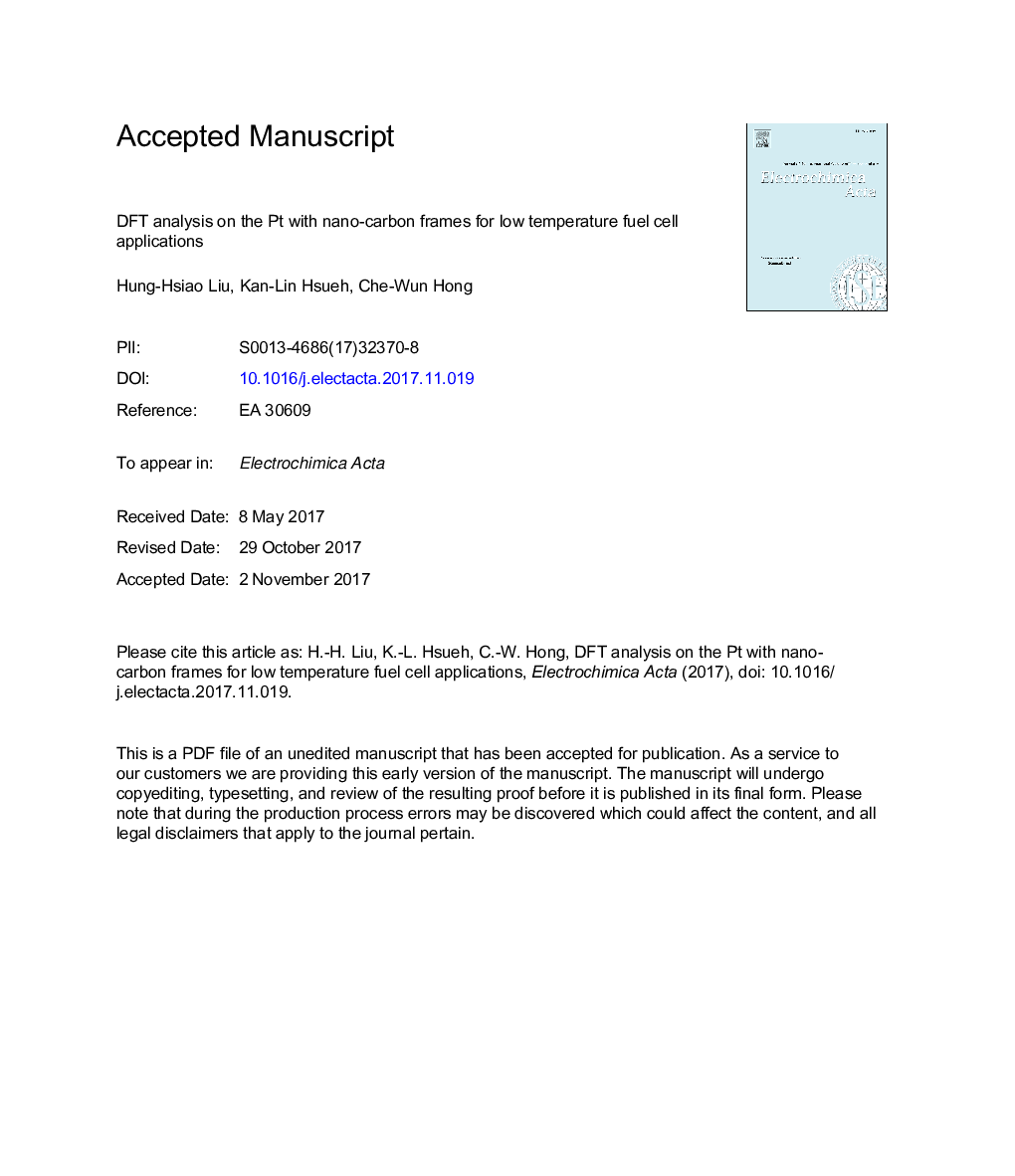| Article ID | Journal | Published Year | Pages | File Type |
|---|---|---|---|---|
| 6604916 | Electrochimica Acta | 2018 | 26 Pages |
Abstract
The oxygen reduction reaction (ORR) on the cathode of fuel cells limits the low-temperature fuel cell performance. Platinum and its alloys are commonly used as the ORR catalyst. Single wall carbon nanotube (SWCNT) and graphene (GR) that have good electric conductivity and high specific surface area are used as nano-frame substrates to reduce the amount of platinum used on the cathode. It is difficult to evaluate the influence of substrate on the ORR experimentally. Therefore, this study investigates the reaction mechanisms by the first principles calculation using Density Functional Theory (DFT). The adsorption energy, total energy of the system, reaction energy and activation energy of the ORR are all calculated. Simulation results show that the 85.27Â wt% of Pt on graphene and 18.48Â wt% of Pt doped single wall carbon nano-tubes have the best reaction activity. Both of these two nano-frames can reduce the usage of platinum, increase the reaction area, and maintain an excellent reaction activity. We also found that structure of oxygen adsorption site and the degree of Pt dispersion have significantly effects on the oxygen binding energy.
Related Topics
Physical Sciences and Engineering
Chemical Engineering
Chemical Engineering (General)
Authors
Hung-Hsiao Liu, Kan-Lin Hsueh, Che-Wun Hong,
